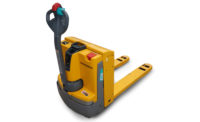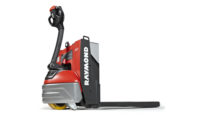TPPL battery claims vs lithium-ion battery claims in marine applications
TPPL batteries require regular extended charges at declining charge acceptance rates to bring the batteries to a full state of charge in order to hold sulfation at bay.

Thin plate pure lead (TPPL) batteries are a variant of absorbed glass mat (AGM) technology. But, whereas AGM batteries (and all other conventional lead-acid batteries) have cast lead plate grids, which conduct current into and out of the battery, and into which the active material of a battery is pasted, the TPPL batteries have plates stamped out of a roll of pure lead.
This design of TPPL batteries has led to some extravagant performance claims. In particular:
- The batteries can be charged at up to the 6C rate (six times their rated capacity). Based on a considerable amount of testing in the real world and in a fully discharged state, the batteries may absorb the 3C rate for a limited period of time, but this charge acceptance rate declines to the 1C rate by around 60-70% state of charge. Thereafter, although the charge acceptance rate is higher than with traditional deep cycle batteries, it follows the same curve as with any other lead-acid battery. To fully recharge these batteries from a fully discharged state, even with unlimited charging sources, is going to take 2-3 hours. In many marine applications, the batteries do not receive this full charge cycle on a regular basis (i.e. are operated in a partial state of charge).
- The batteries are resistant to sulfation. This is at best only partially true. When operated in a partial state of charge, these batteries perform in a very similar fashion to other AGM batteries (of which they are a subset), which is to say that as the partial state of charge cycles accumulate, there is a progressive loss of capacity. This capacity can frequently be recovered with a controlled overcharge, but for this to be successful, the voltage has to be driven to high levels (sometimes almost to 3v/cell, or 17.8 volts with a 12v battery) at low current levels (3-5% of a battery’s rated capacity). This requires specialized charging equipment and careful attention to the battery. During a high-voltage capacity-recovery charge, some venting of electrolyte will occur. In general, these batteries are manufactured with surplus electrolyte, and so can handle a limited number of these “conditioning” cycles, but over time, the electrolyte will dry out and the battery will fail. In a partial state of charge situation, to avoid capacity loss, the batteries should be brought to a full state of charge with an extended charge cycle every week, which is not practical in many marine applications.
- Up to 80% of the rated capacity of a battery is usable for hundreds of cycles. This may be true in the laboratory, but it presupposes a full recharge after each discharge, which requires an extended charge cycle. In the marine world, the full recharge often does not occur, in which case the usable capacity is reduced, and then, because of the lack of a full recharge, additionally reduces over time. In many applications, the usable capacity is limited to around 50%.
- The batteries will support rapid discharges and recharges. This is true up to the 1C level, although on the recharge side, not beyond 60-70% state of charge, and on the discharge side, Peukert’s equation applies as with any other lead-acid battery (although the exponent may be a little different), which is to say the higher the rate of discharge, the less the capacity that can be withdrawn before the voltage crashes. At a 1C discharge rate, the effective capacity is greatly reduced. The other thing to note is that although the batteries are about 85% efficient at high discharge and recharge rates, a considerable amount of internal heat is generated, which will reduce battery life if not adequately managed.
- If brought to a full state of charge, the batteries can be stored for months without additional charging. This is true because of the low self-discharge rates.
Looking for a reprint of this article?
From high-res PDFs to custom plaques, order your copy today!





